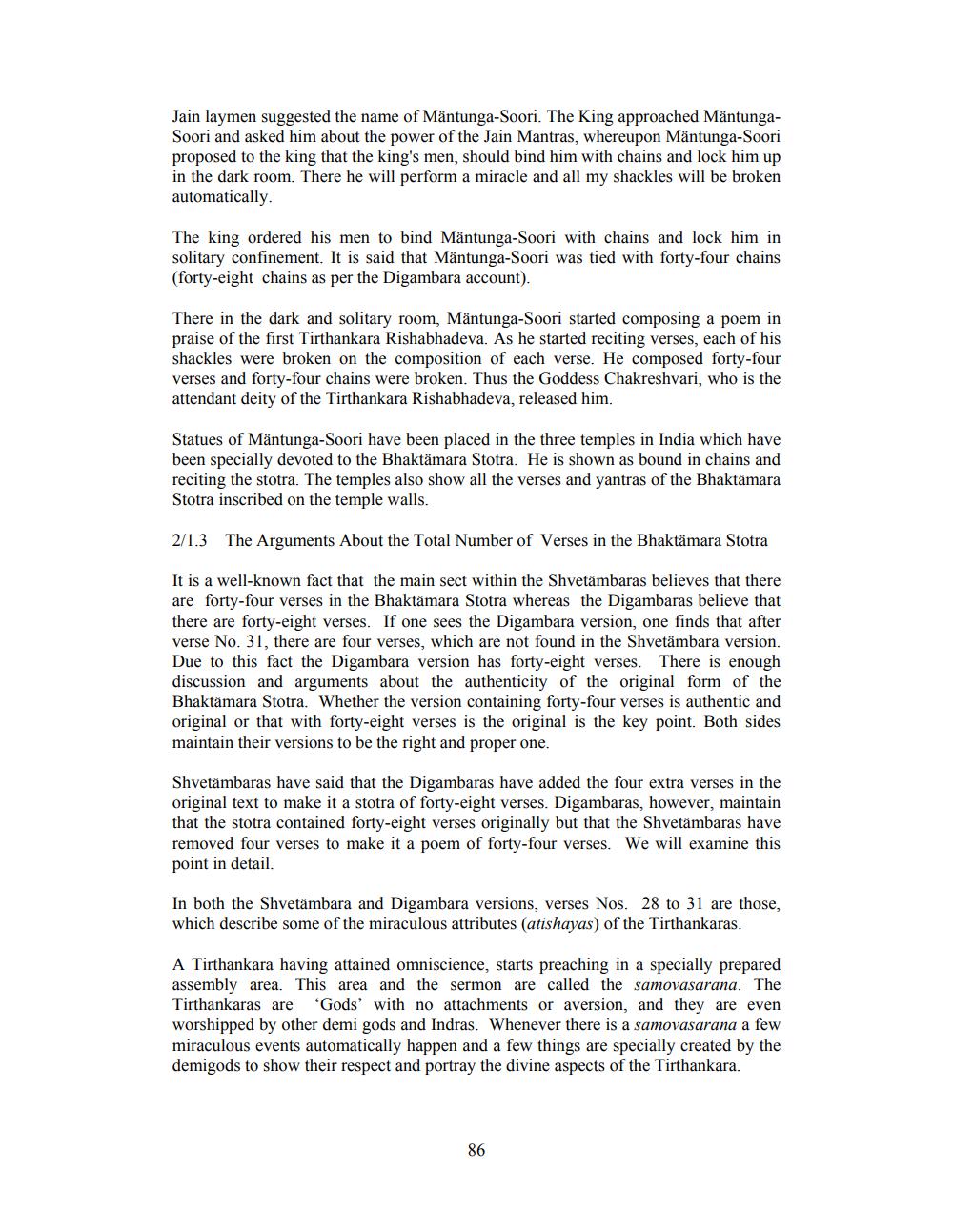________________
Jain laymen suggested the name of Mäntunga-Soori. The King approached MäntungaSoori and asked him about the power of the Jain Mantras, whereupon Mäntunga-Soori proposed to the king that the king's men, should bind him with chains and lock him up in the dark room. There he will perform a miracle and all my shackles will be broken automatically.
The king ordered his men to bind Mäntunga-Soori with chains and lock him in solitary confinement. It is said that Mäntunga-Soori was tied with forty-four chains (forty-eight chains as per the Digambara account).
There in the dark and solitary room, Mäntunga-Soori started composing a poem in praise of the first Tirthankara Rishabhadeva. As he started reciting verses, each of his shackles were broken on the composition of each verse. He composed forty-four verses and forty-four chains were broken. Thus the Goddess Chakreshvari, who is the attendant deity of the Tirthankara Rishabhadeva, released him.
Statues of Mäntunga-Soori have been placed in the three temples in India which have been specially devoted to the Bhaktämara Stotra. He is shown as bound in chains and reciting the stotra. The temples also show all the verses and yantras of the Bhaktämara Stotra inscribed on the temple walls.
2/1.3
The Arguments About the Total Number of Verses in the Bhaktämara Stotra
It is a well-known fact that the main sect within the Shvetämbaras believes that there are forty-four verses in the Bhaktämara Stotra whereas the Digambaras believe that there are forty-eight verses. If one sees the Digambara version, one finds that after verse No. 31, there are four verses, which are not found in the Shvetämbara version. Due to this fact the Digambara version has forty-eight verses. There is enough discussion and arguments about the authenticity of the original form of the Bhaktämara Stotra. Whether the version containing forty-four verses is authentic and original or that with forty-eight verses is the original is the key point. Both sides maintain their versions to be the right and proper one.
Shvetämbaras have said that the Digambaras have added the four extra verses in the original text to make it a stotra of forty-eight verses. Digambaras, however, maintain that the stotra contained forty-eight verses originally but that the Shvetämbaras have removed four verses to make it a poem of forty-four verses. We will examine this point in detail.
In both the Shvetämbara and Digambara versions, verses Nos. 28 to 31 are those, which describe some of the miraculous attributes (atishayas) of the Tirthankaras.
A Tirthankara having attained omniscience, starts preaching in a specially prepared assembly area. This area and the sermon are called the samovasarana. The Tirthankaras are "Gods' with no attachments or aversion, and they are even worshipped by other demi gods and Indras. Whenever there is a samovasarana a few miraculous events automatically happen and a few things are specially created by the demigods to show their respect and portray the divine aspects of the Tirthankara.
86




